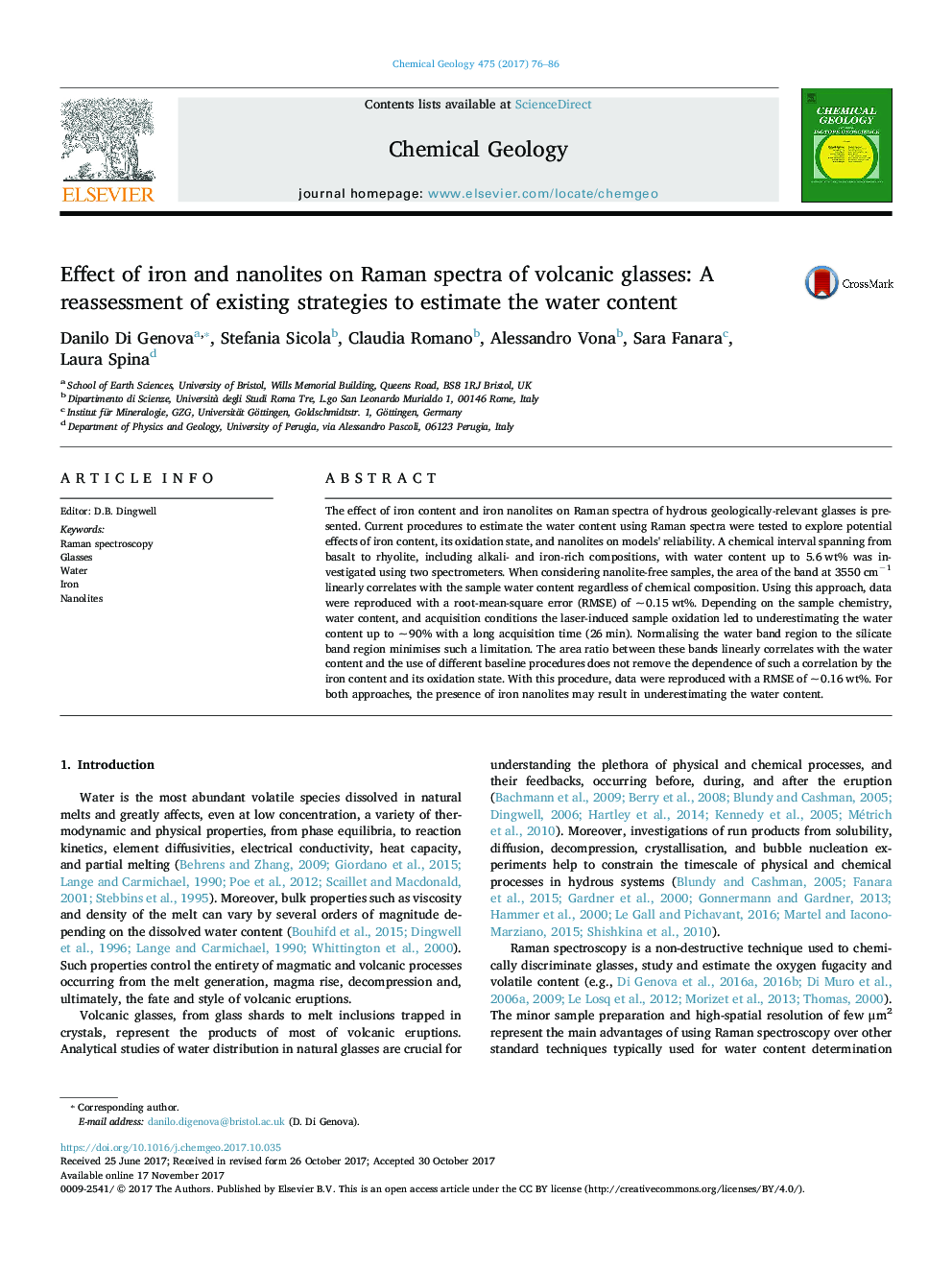| Article ID | Journal | Published Year | Pages | File Type |
|---|---|---|---|---|
| 8910502 | Chemical Geology | 2017 | 11 Pages |
Abstract
The effect of iron content and iron nanolites on Raman spectra of hydrous geologically-relevant glasses is presented. Current procedures to estimate the water content using Raman spectra were tested to explore potential effects of iron content, its oxidation state, and nanolites on models' reliability. A chemical interval spanning from basalt to rhyolite, including alkali- and iron-rich compositions, with water content up to 5.6Â wt% was investigated using two spectrometers. When considering nanolite-free samples, the area of the band at 3550Â cmâ1 linearly correlates with the sample water content regardless of chemical composition. Using this approach, data were reproduced with a root-mean-square error (RMSE) of ~Â 0.15Â wt%. Depending on the sample chemistry, water content, and acquisition conditions the laser-induced sample oxidation led to underestimating the water content up to ~Â 90% with a long acquisition time (26Â min). Normalising the water band region to the silicate band region minimises such a limitation. The area ratio between these bands linearly correlates with the water content and the use of different baseline procedures does not remove the dependence of such a correlation by the iron content and its oxidation state. With this procedure, data were reproduced with a RMSE of ~Â 0.16Â wt%. For both approaches, the presence of iron nanolites may result in underestimating the water content.
Keywords
Related Topics
Physical Sciences and Engineering
Earth and Planetary Sciences
Geochemistry and Petrology
Authors
Danilo Di Genova, Stefania Sicola, Claudia Romano, Alessandro Vona, Sara Fanara, Laura Spina,
